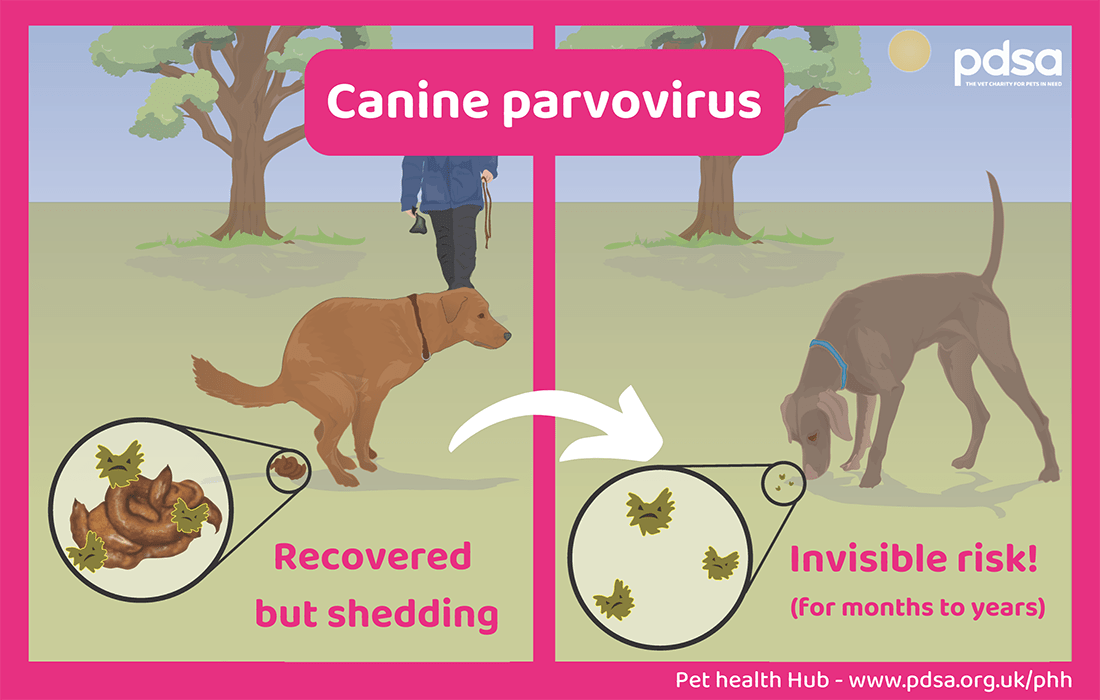Caring for a dog recovering from parvovirus
If your dog has recovered enough to return home, you will need to continue nursing them while they fully recover:
Isolation – your dog will still be infectious for two to four weeks after they have recovered, so it’s vitally important that you keep them away from other dogs and public spaces for this time.
Monitoring – your dog might still have diarrhoea for a few days after they return home, but this should steadily improve. However, if it continues, they start vomiting again, won’t eat, or seem lethargic (low in energy), contact your vet for advice.
Food – your dog will probably be very hungry after not eating properly for a few days, but it’s important not to let them eat too much in one go. Instead, you’ll need to regularly offer them small amounts of bland food - your vet will tell you which food is best.
Water – offer your dog water regularly, but don’t force them to drink if they don’t want to.
Toileting – your dog will need to go to the toilet very regularly so give them constant access to somewhere they can wee and poo, and clear up their poo as thoroughly as possible to prevent the virus from spreading.
Rest – make sure they get lots of rest in a comfortable, warm bed – they won’t need any walks while they recover.
Other pets – other pets that are up to date with their vaccines are at a low risk of contracting the virus. If you have any unvaccinated pets, have them vaccinated straight away and keep them completely separate from your poorly dog for at least a month after they have recovered (and you’ve had a chance to disinfect everything). Parvovirus can remain in the environment for months to years, and it’s almost impossible to remove it all even after disinfection, so don’t bring any dogs or cats into your home unless they are fully vaccinated (especially puppies and kittens).
Bathing – once they are well enough, you can bathe your dog to reduce the amount of virus on their fur. Only do so if it doesn’t stress them out, make sure you use warm (not hot) water, and dry them off thoroughly afterwards with a towel so they don’t get cold.
Vaccines – once your dog has fully recovered from parvovirus, they will probably have some natural protection against the virus – unfortunately, there isn’t any evidence to say how long this will last, so we recommend that they continue to have their parvo vaccines as your vet recommends.





